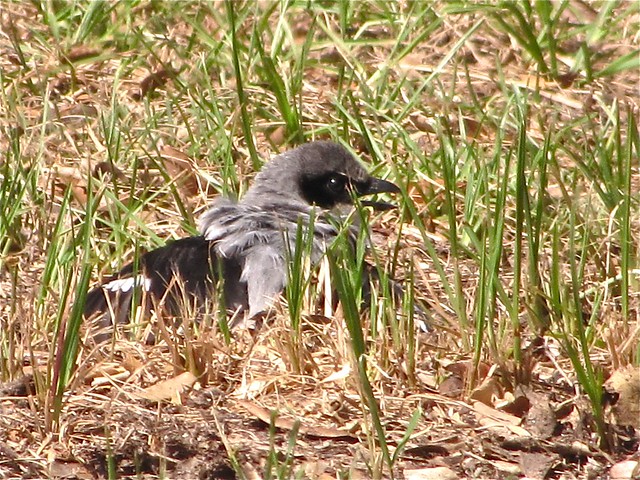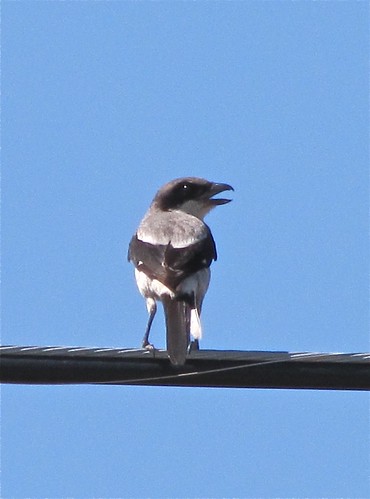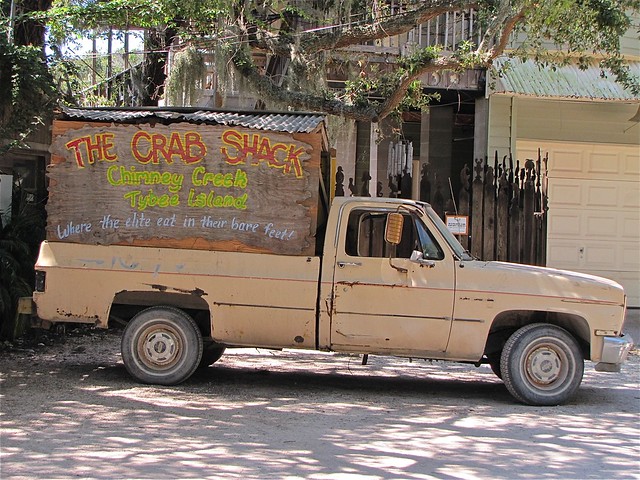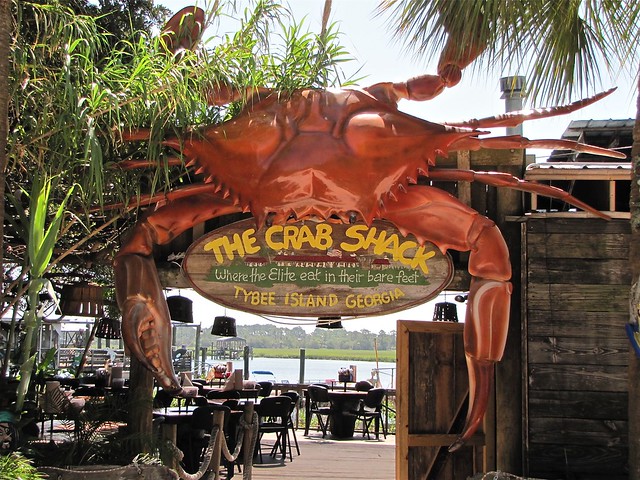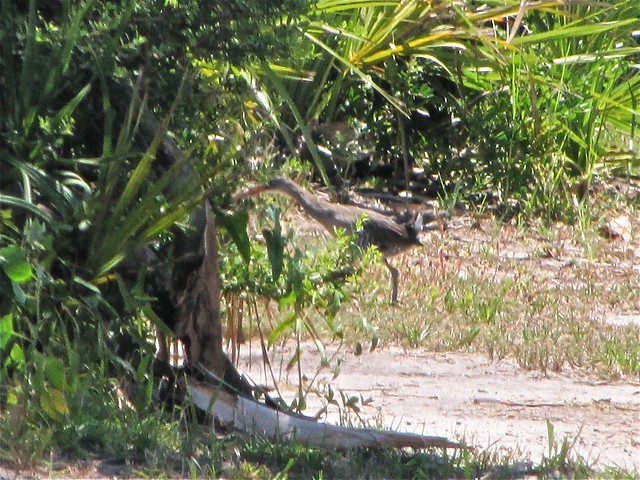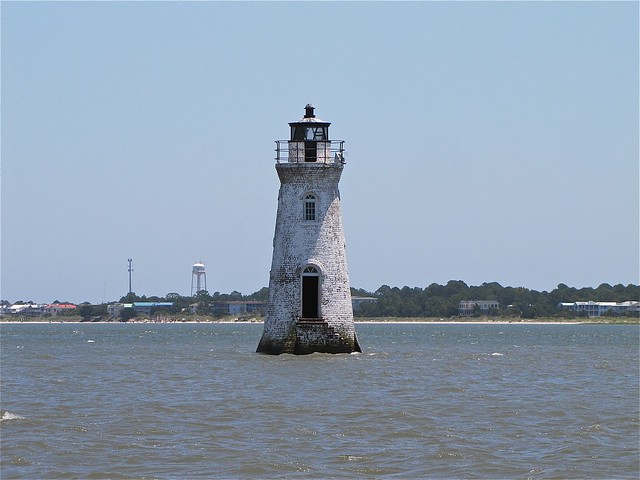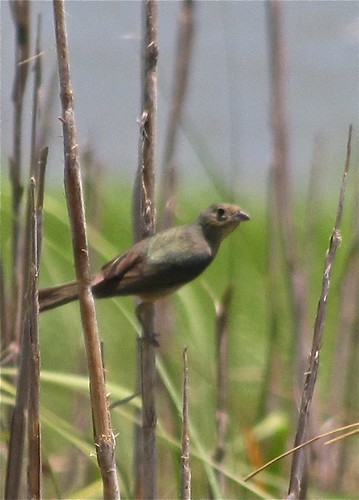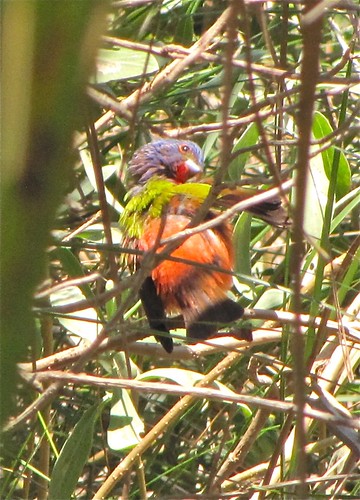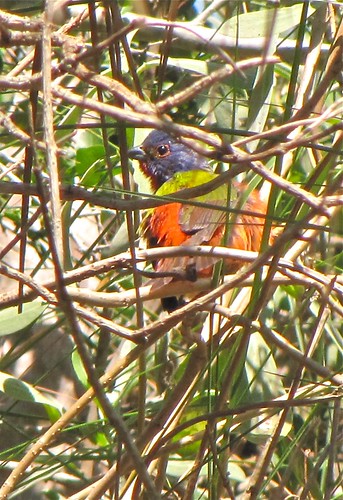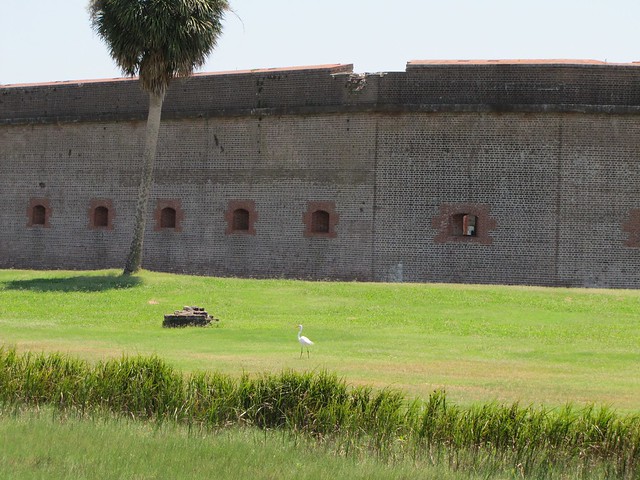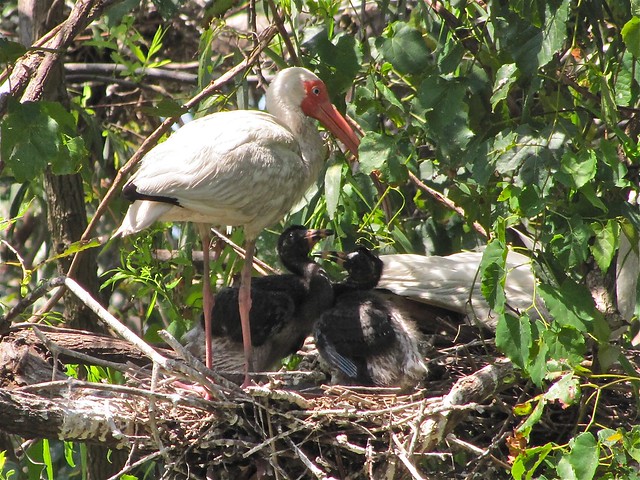
This post comes a year and a half late because it recounts events that happened at the end of a two week birding trip, and after writing ten other posts after returning, I ran out of time for photo editing and writing. Once I had time to edit and write again, I turned to recounting more recent events. However, the two days I spent at Pinckney Island were fantastic and worth sharing. So here it is for anyone interested.
On July 11, 2012, after a wonderful vacation in Florida and after driving to Hilton Head, South Carolina for a wedding rehearsal and staying the night with my brother Jerry in Savannah, GA, I drove Carrie back to Hilton Head so that she could have her hair done, etc. for Tiffany's wedding later that day. Of course, there was no need for me to wait around at Hilton Head. I planned to spend a good part of the day prior to the wedding at Pinckney Island NWR, which is basically between Hilton Head and the mainland. Scott Brewer had recommended this location to me on the Illinois Birder's Forum, when I asked where to bird near Hilton Head back before I had left for Florida.
After dropping Carrie off at Hilton Head, I arrived at Pinckney Island at about 9:35 a.m. and was greeted near the refuge entrance by Snowy and Great Egrets, and several of the ubiquitous White Ibis.
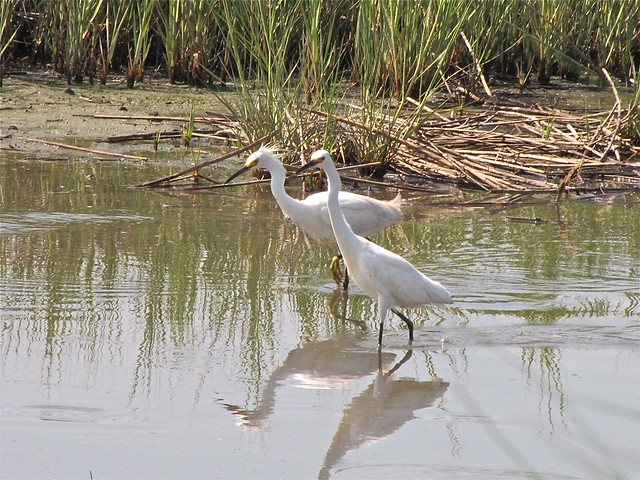
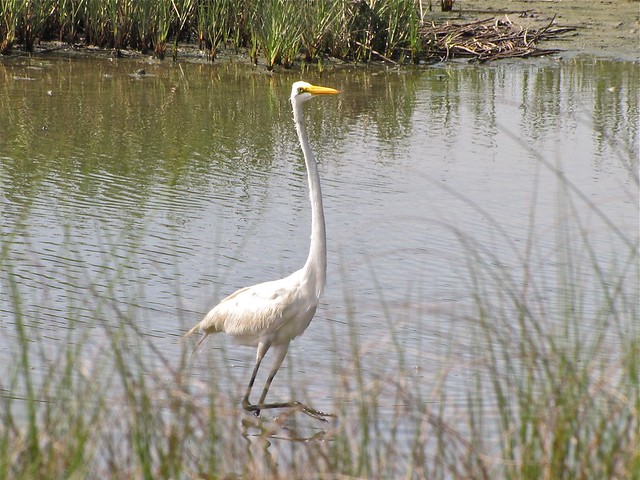
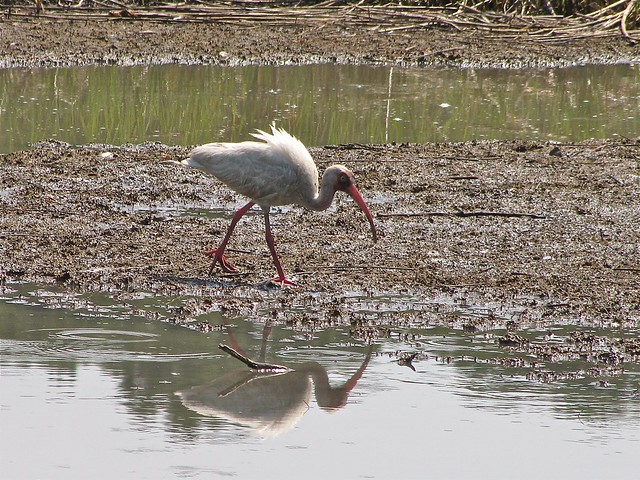
Once I reached the parking lot in the middle of a wooded area, teeming with songbirds, I started looking for a visitor center with some bathrooms and information about the island. Unfortunately, however, there was no visitor's center, and there were no bathrooms. There was at least a booth at the Northern edge of the woods with pamphlets, containing a map of the park. I took one of the flyers and started walking North on the trail to Ibis Pond. Here is a link to the map inside the pamphlet.
As soon as I left the wooded area, I was completely exposed to the July sun, and it was a hot July morning. It was a long, half mile walk to Ibis Pond, but it was well worthwhile. It is very difficult to describe what I found when I arrived. It was a huge ibis and heron rookery with well over a thousand birds, mostly White Ibises, Tricolored Herons, and Little Blue Herons. The sights, the sounds, and the smells all contributed to an amazing experience. The first three videos on this channel below, will help to explain the magnitude of Ibis Pond. The first two are from my first day there, and the third video is from the next day when I went back with Carrie. Notice how thickly these waders and their nests are stacked and layered in these trees in the middle of the pond.
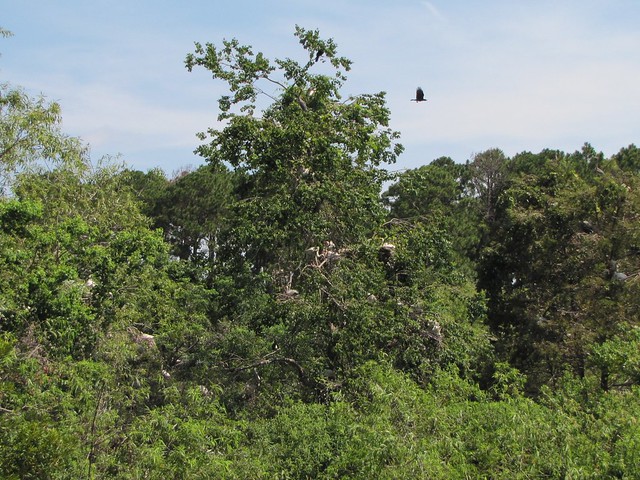
As I watched this Tricolored Heron feeding it's insatiable, demanding fledgling, I began to feel sorry for this weary parent, especially when the fledgling continued to chase the parent around after it had obviously given up all the regurgitated food it had to give. Notice also the young White Ibises another layer in behind the two Tricolored Herons in the third photo below.
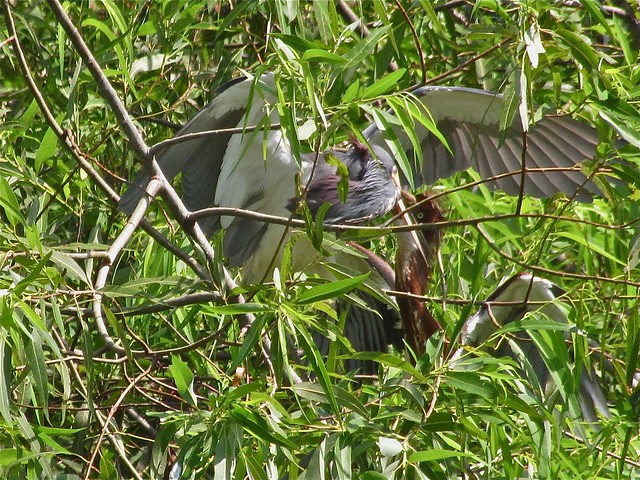
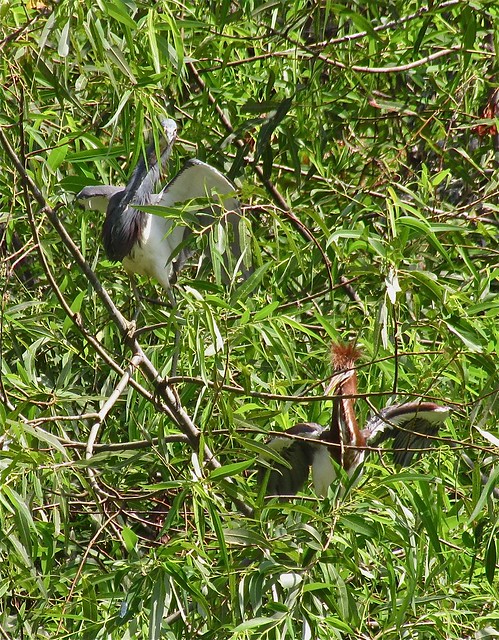
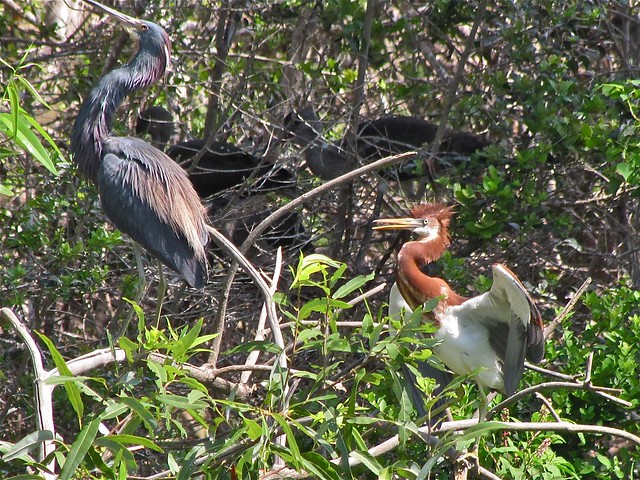
As I started walking around this pond, I saw this Little Blue Heron up high in the tree.
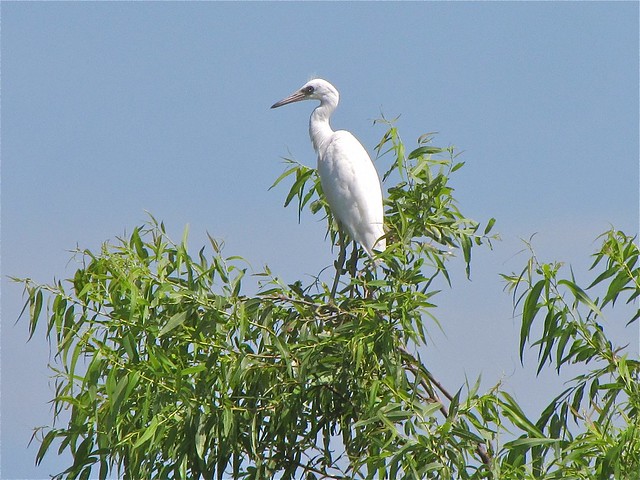
Then I noticed this strange looking bird down low by the pond.
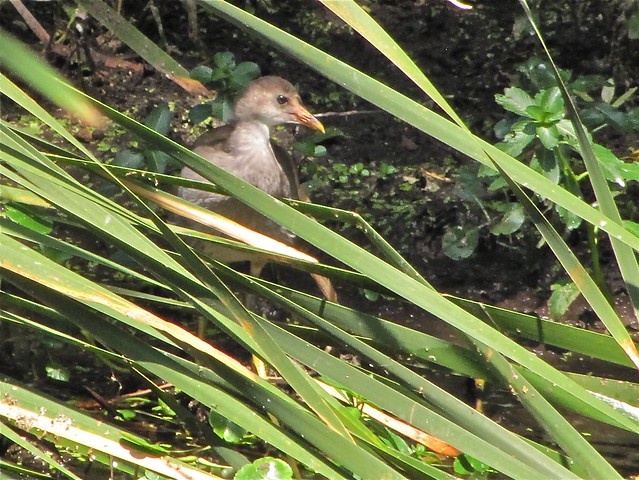
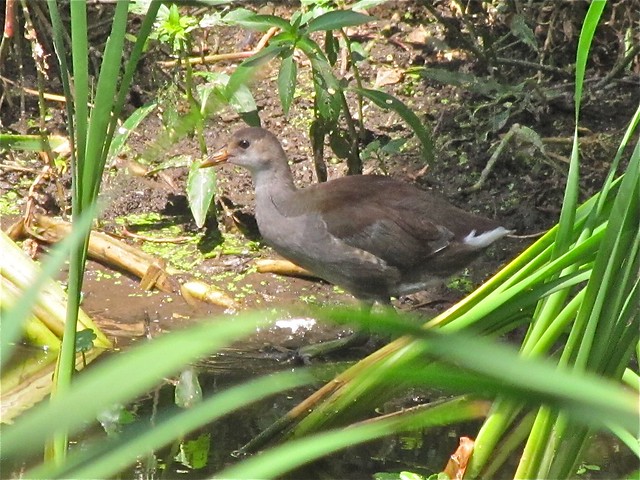
I was puzzled about this bird's identification until I saw its parent.
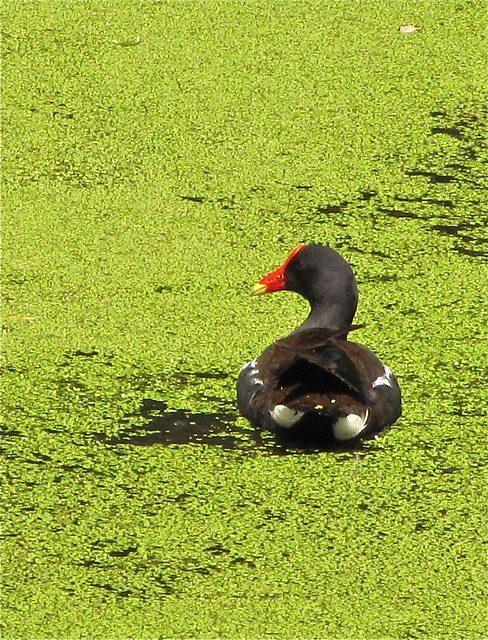
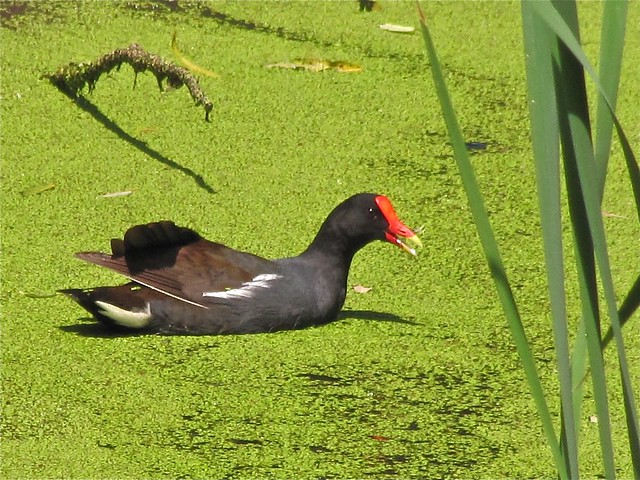
Then I noticed it was not alone on the shore.
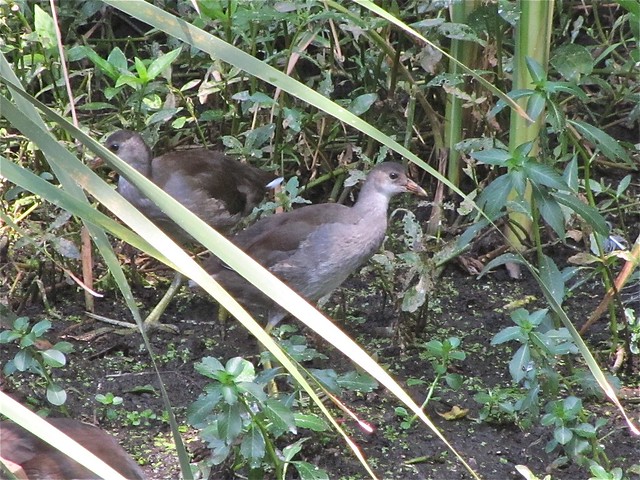
I was able to get close looks of the White Ibises as I continued around the pond.


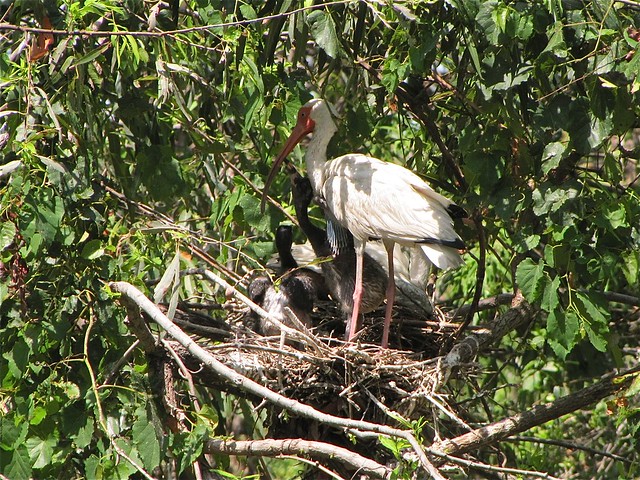
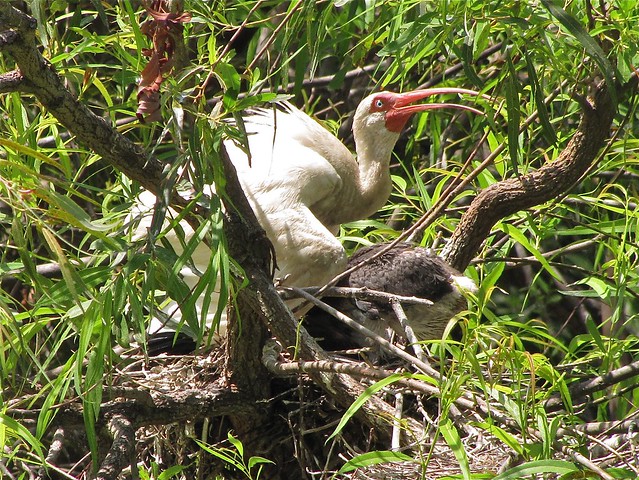
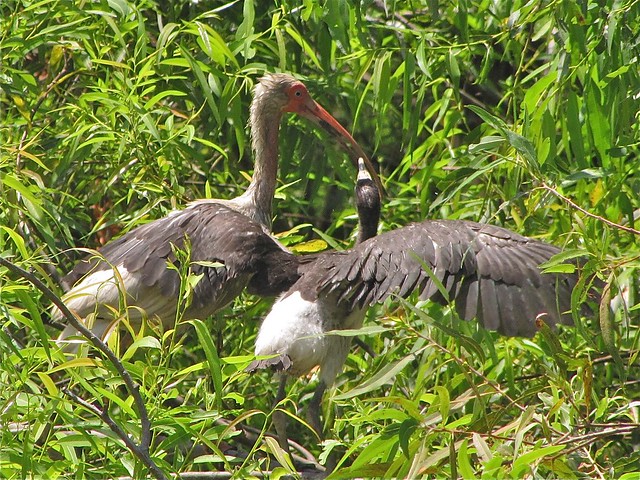
I also discovered a family of Wood Ducks, a Black-crowned Night-heron, and more Tricolored and Little Blue Herons.
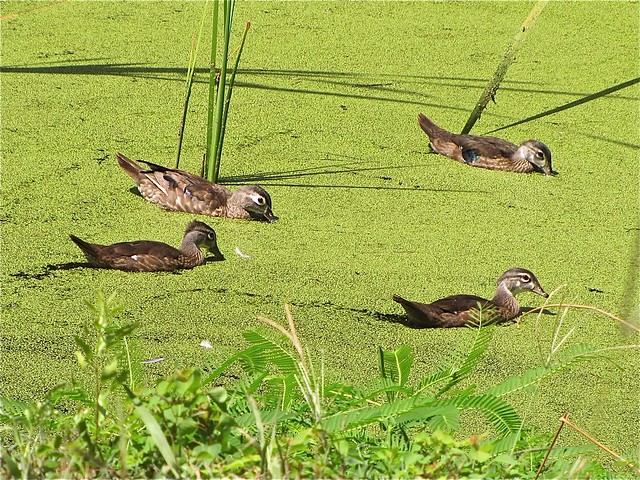
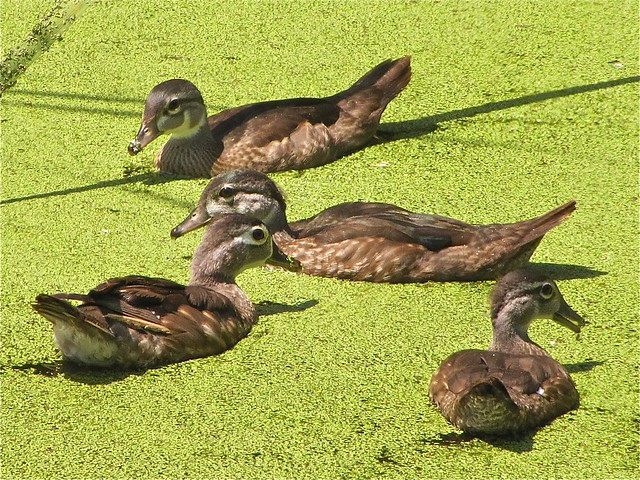


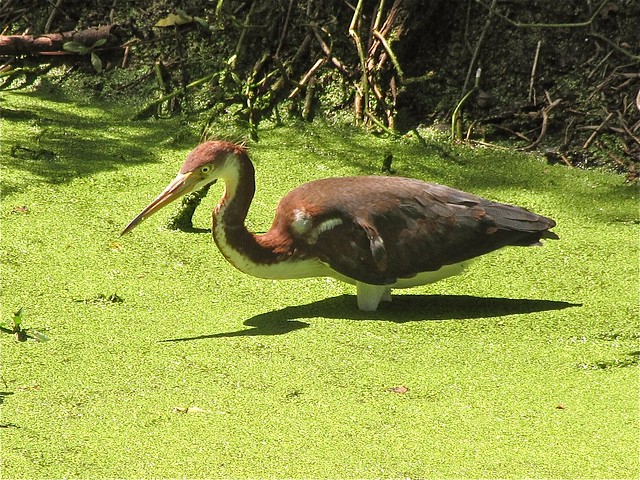
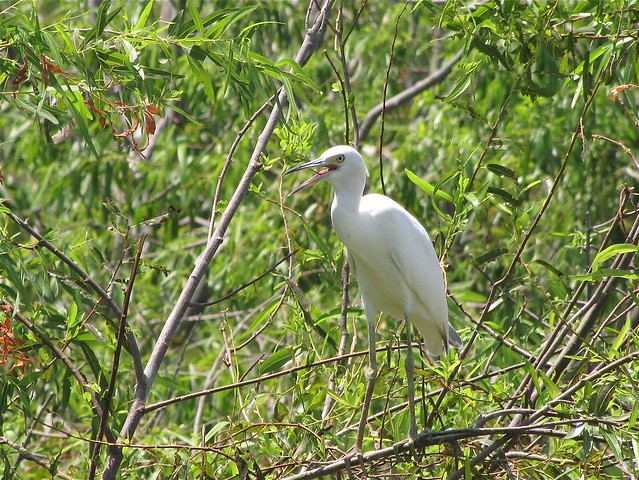
The expression on this Ibis's face was telling about the stress of parenting.
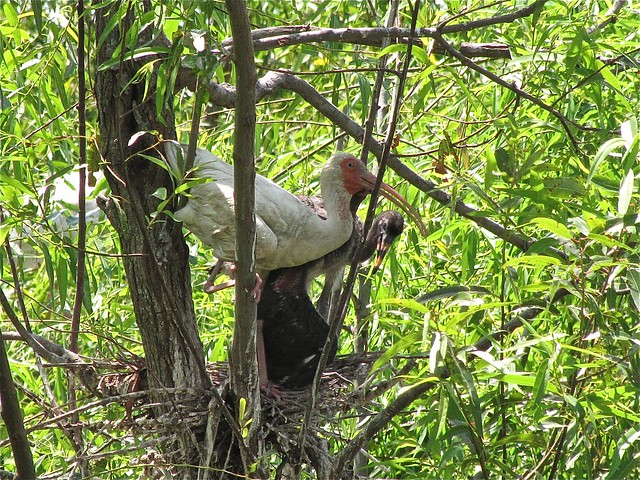
Concerned that the batteries in my camera would die with all this photography, I decided to hike back to the car to get my spare batteries before continuing on the trail to Starr Pond. On my way back to the car, I saw this Red-headed Woodpecker. It was every bit as beautiful as the ones in Illinois.

Going to the car and back to Ibis Pond was about a mile. Then it was about another half a mile to Starr Pond. On the way to Starr Pond, I passed several people including a couple that said they had seen a large alligator beside the pond. To my disappointment, I was unable to relocate this beast, but Starr Pond was another exhilarating experience. This pond did not have trees in the middle of it, but there were plenty of birds foraging there, including numerous Wood Storks and another Common Gallinule family.
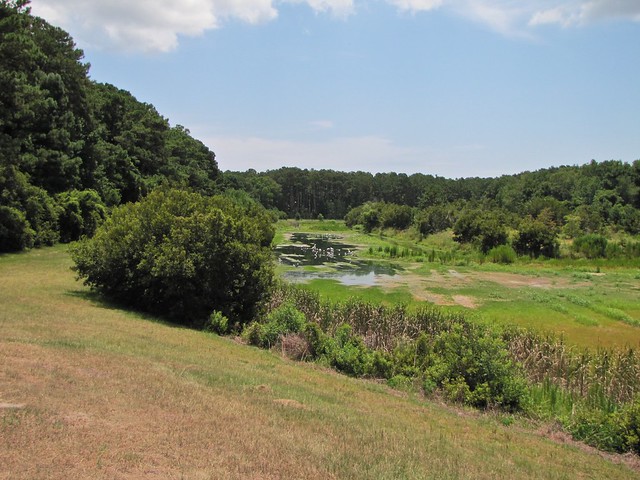

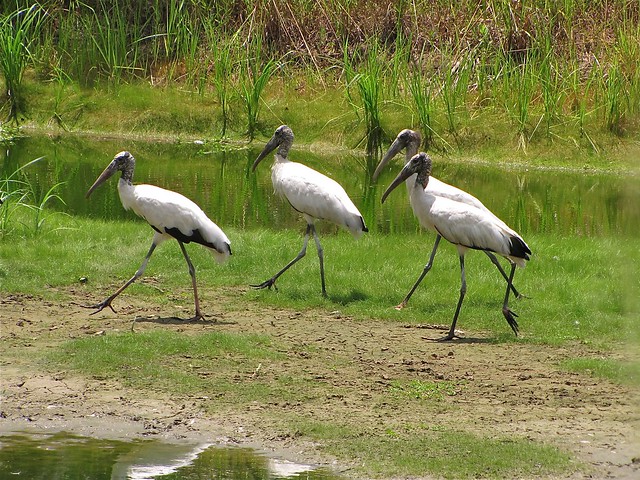
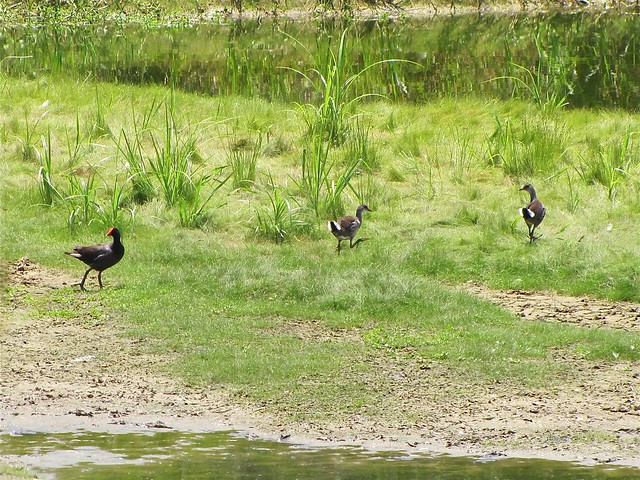

Other birds foraging in and around the pond included Snowy Egret, White Ibis, Little Blue Heron, and this Black-crowned Night-heron, standing next to yet another Common Gallinule on the other side of the pond.


As I rounded the other side, I saw this adult Little Blue Heron.
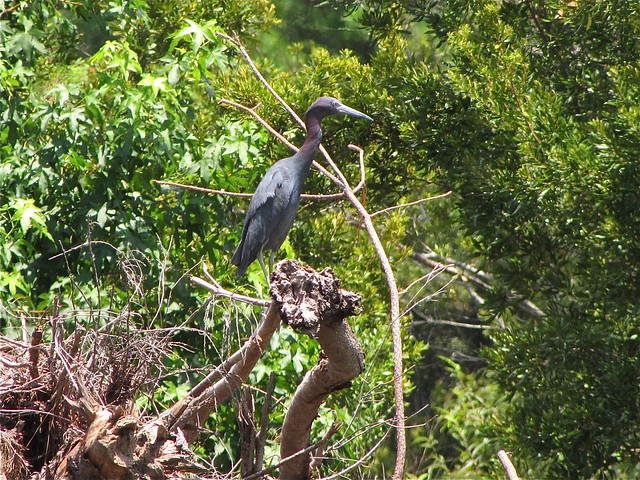
I thought this beautiful intermediate Little Blue Heron might be my favorite find of the day.

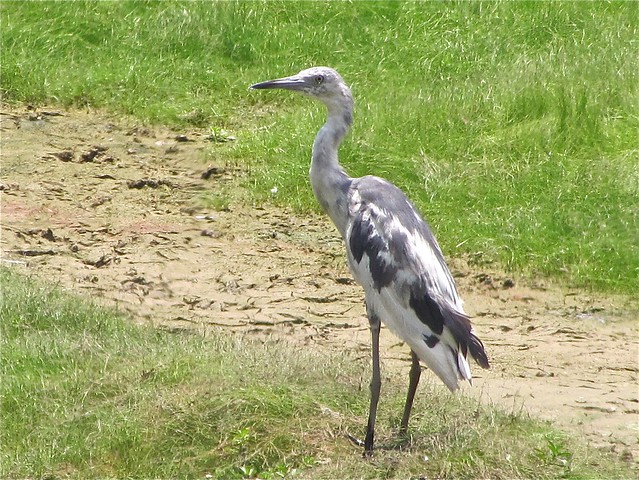
But then I walked up on this beauty . . .
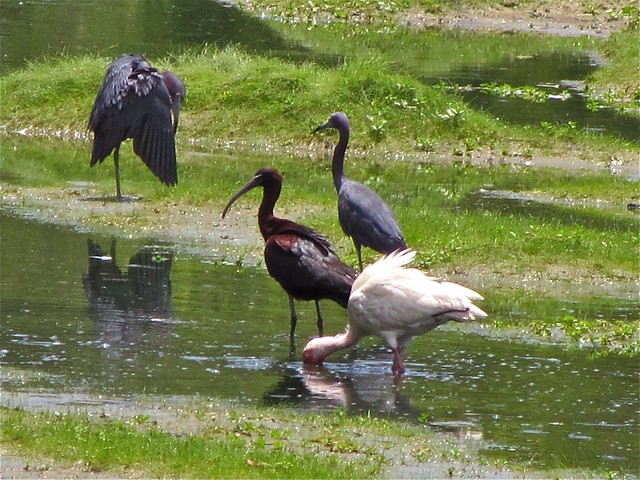
a Glossy Ibis--my first lifer of the day!
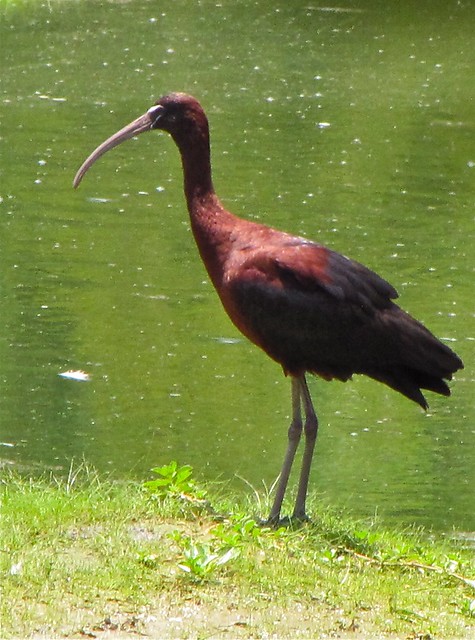
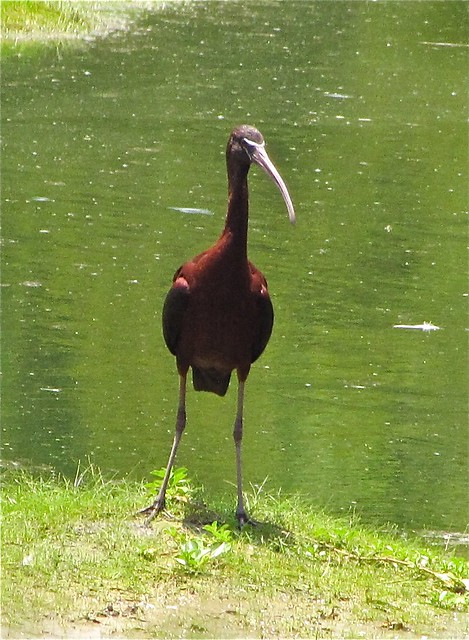
As I neared the completion of my walk around the pond, I felt a sharp pain near my belly button. It was a strange looking tick, and I angrily yanked it out. I know you are not supposed to do that, but it was like a reflex to the bite. Ouch! There was so much of the island left to explore, but I had a wedding to attend so I began my walk back to the car. On the way back, I stopped at Ibis Pond again, where I saw another family of Wood Ducks and a very cooperative Green Heron.

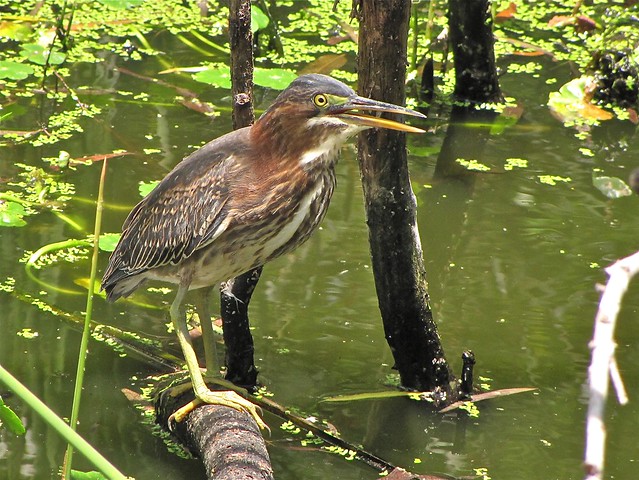

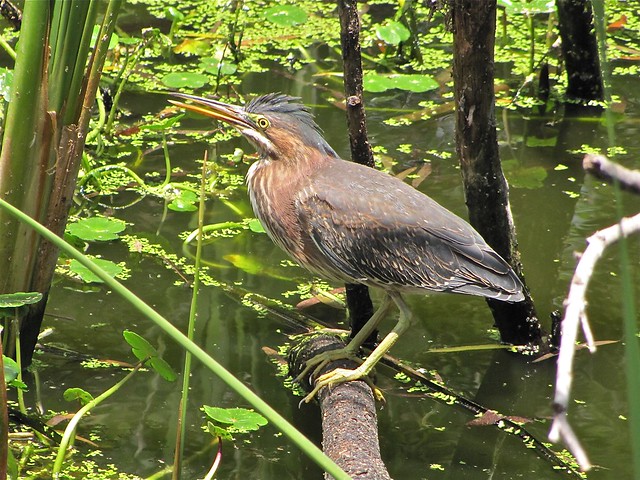
It was also nice to be able to compare this Little Blue Heron and Snowy Egret while they were standing so close together.
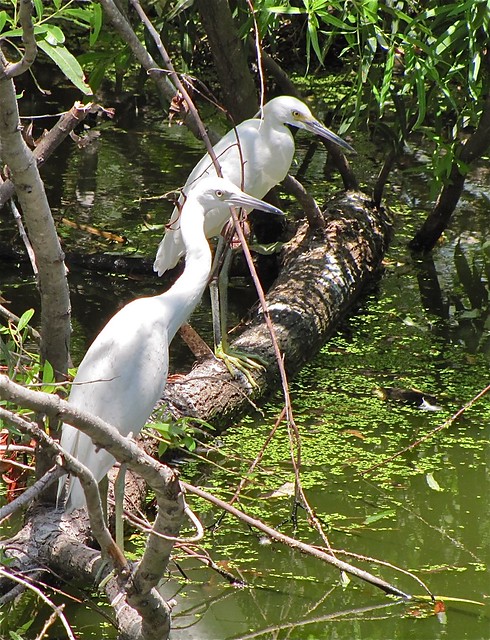
On the way back to the parking lot, I photographed these crabs. I don't know the name of the species.
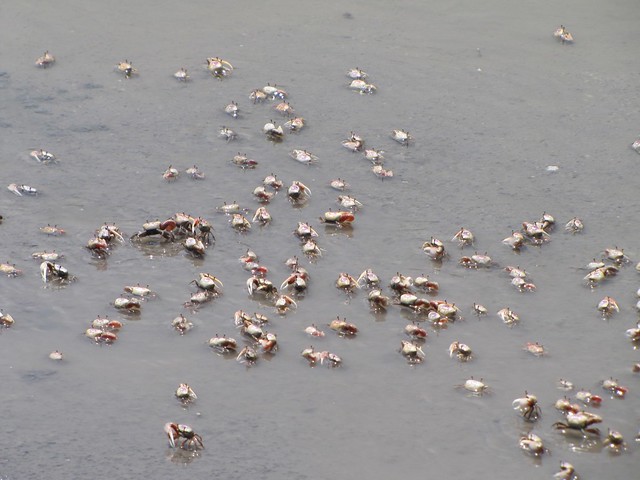
Then near the car, I found this female Painted Bunting.
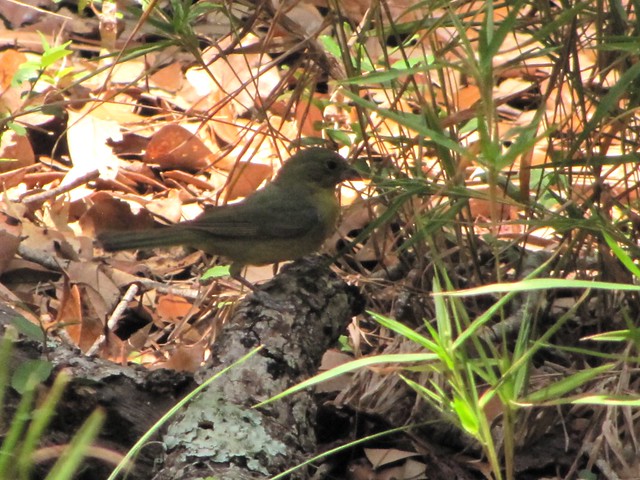
Then as I drove out of the refuge, I saw this gorgeous juvenile Ibis standing next to an adult.
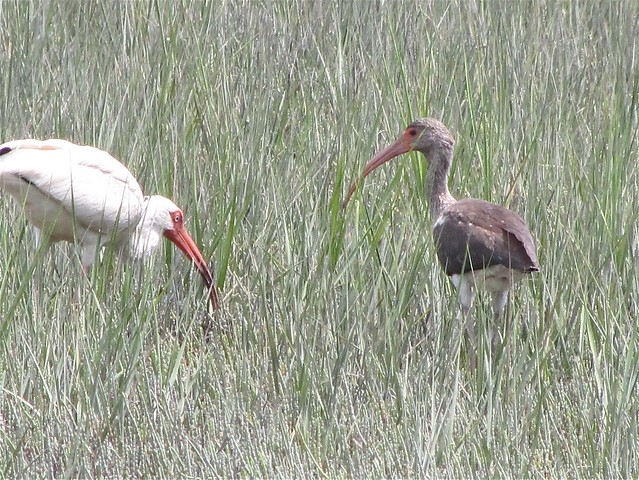
After I returned to Hilton Head, I felt another tick biting the back of my neck as I was walking inside to get cleaned up for the wedding. Two ticks, a lifer, and an experience I will never forget. Carrie had to see this amazing place, and we had one day left for her to see it.
These events took place on July 11, 2012, but this post was written and published on January 6, 2014.
